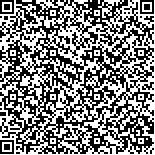下载中心
优秀审稿专家
优秀论文
相关链接
摘要

遥感叶面积指数产品精度和不确定性需要通过地面测量的数据来验证。因为两者的空间尺度差异,验证前需要通过尺度转换方法将这两种数据的尺度统一。将泰勒级数展开模型进行改进后,可以用于解决叶面积指数遥感产品验证中地面测量数据与遥感产品尺度不匹配的问题,同时可以针对每个数据定量给出误差。将误差在阈值范围内的实测数据作为地面参考值对遥感产品进行验证。本文利用这种方法将黑河综合遥感联合实验数据集中的地面测量叶面积指数尺度上升到遥感像元尺度,并与MODIS,GLASS LAI遥感产品进行了比较。
关键词:
叶面积指数(LAI) 尺度转换 泰勒级数展开模型 黑河流域The quality of remote sensing Leaf Area Index(LAI)products and the uncertainties of the products are evaluated with ground measurements. The spatial scale mismatch problem of these two data should be solved through upscaling before comparing these two dataset. To evaluate remote sensing LAI products using ground measurements, the spatial scale mismatch problem of these two datasets should be solved first. A new approach based on Taylor Series Expansion Model(TSM)was proposed in this paper. It combines the information of high-resolution images, NDVI-LAI empirical model and the LAI ground measurements to generate the upscaled LAI at the coarse-resolution scale. This approach not only can upscale ground measured LAI to coarse-resolution, it also can provide upscaling accuracy for each pixel. The LAI measurements collected in 2008 in the Heihe experimental research region was used to test this method. The possible error associated with this method is from two sources. One is neglection of the third- and higher-order TSM terms, which can be estimated using Taylor series remainder. Another is the uncertainty of the empirical model. The total error of the upscaling method is the sum of these two errors. The data used in this study were collected during the Watershed Allied Telemetry Experimental Research(WATER)project. The ground measurements were collected in the Yinke Oasis and the Huazhaizi Desert experimental area using LAI-2000, TRAC, fisheye camera, and by manual measurement. The corn LAI dataset was chosen for analysis. Airborne CCD and ASTER data were used to help upscaling to ground measurments. Upscaled LAI ground measurements were compared with NDVI-LAI empirical model calculated LAI and MODIS, GLASS LAI product at 1km scale. The accuracy of the upscaling process was used as reference to select the upscaled LAI. Empirical model calculated LAI is usually considered as more reliable validation data, but it's not directly associated with ground measured LAI, and cant provide accuracy of each pixel. Comparison with empirical model calculated LAI shows that this approach can provide reliable result. Also the accuracy of this approach is a good indicator for selecting validation data. By using the upscaled LAI with acceptable accuracy only, comparison with MODIS and GLASS LAI products show that both products are lower than ground measured LAI at this region. In comparison with other validation method, this method can improve the representativeness of ground measurements by combining more information at the sub-pixel scale and considering the heterogeneity of the land surface. Consequently, this method is suitable for validation studies in which the field-measured data are derived from non-uniform surfaces at coarse-resolution pixel scales. It's a new approach to upscale ground measurements for validation of coarse-resolution products. Mostly important is that the upscaling accuary can be estimated for each pixel, which can provide a reference of how to select high quality ground measurements for validation. Though comparison with MODIS and GLASS LAI products in Heihe region shows both products are underestimating LAI, but this conclusion is not suitable at global scale.

